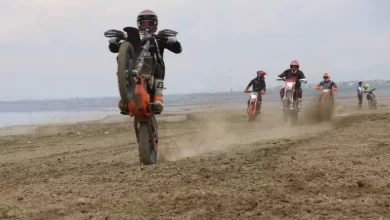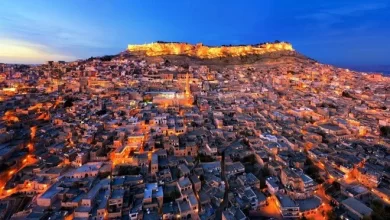A New Underground City Discovered In Konya
A new underground city connected to each other by tunnels was discovered in Konya's Sarayönü district, one kilometer north of the Roman "Sarayini" underground city.

The underground city, which was discovered within the scope of the works carried out in cooperation with the Ministry of Culture and Tourism and Sarayönü Municipality, includes cisterns that can meet the water needs of approximately 20 thousand people, workshops of various sizes, and large wineries.

The number of places identified in the 20 thousand square meter area increased to 41.
Konya Directorate of Museums Archaeologist and Head of Excavation Hasan Uğuz told AA correspondent that they were able to date the history of the underground city to the 8th century with the finds they obtained.

Uğuz stated that there are domestic spaces, connected galleries, living spaces resembling rooms, water wells, cisterns, wineries, stoves, workshops, chimneys, oil lamps for lighting, cellars, storerooms, warehouses, vents and spaces whose nature has yet to be investigated in the underground city.
Stating that they expanded the georadar work in the region with the support of Konya Metropolitan Municipality, Uğuz said, “We have detected a new underground city 1 kilometer north of the existing underground city. We have determined that there are tunnel systems connecting these two underground cities. This is a harbinger that the underground city will spread over a much larger area. We will continue our georadar studies in the new year.”

“There Is Enough Water For An Army”
Uğuz pointed out that they discovered a large cistern while cleaning the ruined tunnels and that the cistern consisted of a feeding well and three interconnected galleries:
“The width of the cistern is 63 square meters. In the summer months, 1 meter 20 centimeters of water accumulates here. So there are 63 cubic meters of water in reserve here. We calculate how many people can live in the underground city, how long they can live without going outside, and how many people 63 cubic meters of water reserve can be enough for. Together with the wells feeding the cistern, there is a water supply for almost 20 thousand people. In other words, there is enough water in the cistern for an army. When we had the water analyzed, we determined that the source is a quality water according to its own period. The fact that the water comes filtered from the soil and the storage method ensures this quality.”

Stating that the tunnels leading to the cistern have locking mechanisms with round stones for security purposes, Uğuz said that the source was protected against the risk of poisoning by enemies and preventing looting during times of siege or crisis.
Stating that they obtained finds that will shed light on the agricultural activities of the region in the ancient period in the place that is connected to the outside and closed with stone blocks and wooden flooring, Uğuz said:
“When we intensified our excavation and cleaning work, we determined that the workplace we found was a winery. There is a grape crushing place made of marble stones. There is a grooved place where the grape must flows and there are cubes where it is stored. We found grape seeds and sediments in the samples from the winery. We will have them analyzed in the new period. We hope to obtain an ancient seed from the grape seeds we found. If we come across a grape species that grew in these lands a thousand years ago, this will crown our work. The discovery of both the cistern, the fortified areas and the winery reveals that this place had a wide area of use beyond our expectations.”






